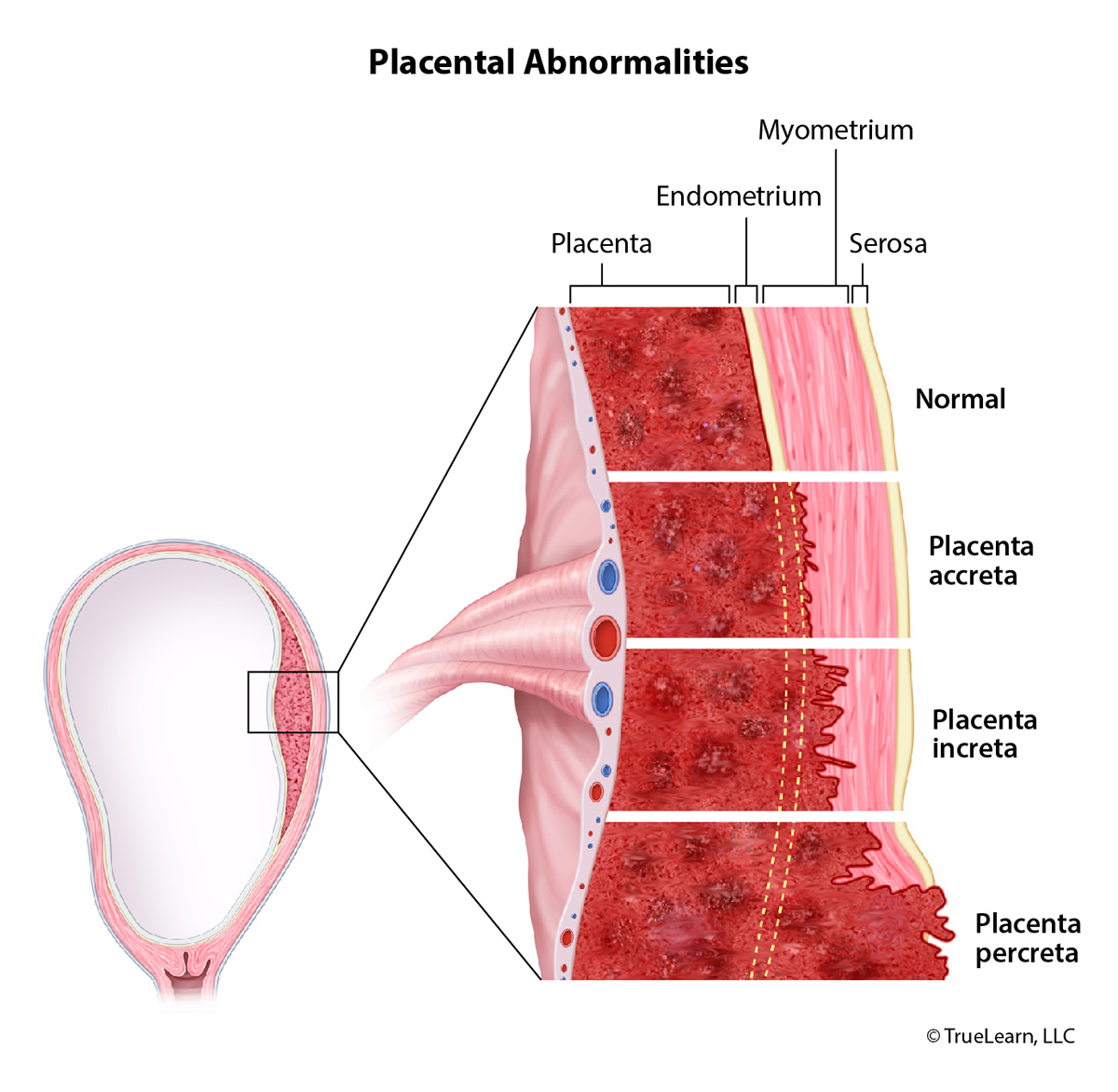Free ABA Advanced Exam Practice Question
We understand that success on the ABA Advanced Exam depends on high-quality content. That’s why we offer expertly crafted practice questions written and reviewed by anesthesia educators, continuously updated to align with the latest ABA content outline and exam blueprint.
The ABA Advanced Exam SmartBank is more than just a question bank. Each question includes in-depth explanations that break down not only why an answer is correct but also why other options are incorrect, reinforcing key concepts and enhancing your understanding. With real-time performance analytics and national benchmarking, you’ll gain valuable insights to track progress and optimize your study strategy.
Try This ABA Advanced Practice Question
A 24-year-old gravida 4 para 3 woman has had inadequate prenatal care. She is undergoing a primary cesarean delivery due to a breech presentation. If found intraoperatively, which of the following is MOST likely to require the initiation of a massive transfusion protocol?
A. Placenta accreta
B. Placenta increta
C. Placenta percreta
Show The Answer Key
The Answer and Explanation
Did you get it right? The correct answer is C.
Placenta accreta spectrum (PAS) is the abnormal attachment of the placenta to the uterine wall, and most cases of PAS involve > 2000 mL of blood loss during delivery. Of the PAS conditions, placenta percreta presents a higher risk of peripartum massive hemorrhage, with increasing risk as the accreta becomes more invasive (placenta accreta < placenta increta < placenta percreta).
Placenta previa is an abnormal insertion of the placenta in the lower uterine segment. A marginal previa lies close to but does not cover the cervical os. A partial previa covers part, but not all, of the cervical os. A total or complete previa completely covers the cervical os. Placenta previa is a leading cause of antepartum hemorrhage because a small section may shear off, leading to bleeding. The presence of placenta previa may require a cesarean delivery. Placenta previa can potentially lead to significant intraoperative blood loss, but it will likely be much less than that associated with a previously undiagnosed abnormally adherent placenta. The risk of intraoperative bleeding increases due to the following factors:
- A uterine incision may cut into an anteriorly located placenta.
- The lower uterine segment implantation site does not contract as well as a normal fundal implantation site does.
- The presence of placenta previa increases the risk of placenta accreta.
- A major risk factor for placenta accreta is the number of previous cesarean deliveries:
- Zero cesarean deliveries = a 3% incidence.
- One cesarean delivery = an 11% incidence.
- Two cesarean deliveries = a 40% incidence.
- Three cesarean deliveries = a 61% incidence.
- Four or more cesarean deliveries = a 67% incidence.
- A major risk factor for placenta accreta is the number of previous cesarean deliveries:
Generally, for an elective cesarean delivery with no antepartum hemorrhage, intraoperative blood loss is not significantly elevated. Furthermore, having a type and screen or perhaps a type and crossmatch for 2 units of packed red blood cells is adequate. Placenta accreta vera (usually just called placenta accreta) occurs when the placenta adheres to the myometrium without invasion of the uterine muscle. Placenta increta occurs when the myometrium is invaded. Placenta percreta is when the placenta invades through the uterine serosa and potentially into other pelvic structures. Many patients with placenta accreta require cesarean delivery with or without hysterectomy since the placenta does not detach normally from the uterus after delivery and can result in postpartum hemorrhage. Postpartum hemorrhage occurs especially when the diagnosis is not expected because attempts to remove the adherent placenta will most likely cause massive, rapid hemorrhage. The types of placental abnormalities are shown in the figure below.

Anesthetic management of patients with known or suspected PAS should include large-bore vascular access, consideration of arterial line placement, use of general anesthesia (or the ability to convert to it quickly), and the ready availability of blood products (ie, keeping them in the room). Prophylactic measures to decrease blood loss, including balloon occlusion or embolization of the internal iliac arteries, should be considered along with intraoperative blood salvage, especially for placenta percreta.
Incorrect Answer Explanations
Answer A: An accreta, in which the chorionic villi attach to the myometrium, is a risk factor for massive transfusion but not as much as a percreta or an increta.
Answer B: An increta, in which the chorionic villi invade the myometrium, is a risk factor for massive transfusion but not as much as a percreta.
Bottom Line:
The risk of hemorrhage requiring massive transfusion is high for obstetric patients with placenta accreta spectrum (PAS). Of the PAS conditions, placenta percreta presents a higher risk of peripartum massive hemorrhage, with increasing risk as the accreta becomes more invasive (placenta accreta < placenta increta < placenta percreta).


